
Japanese / English / Group_only

Image for synergy of satellite and ground-based observations
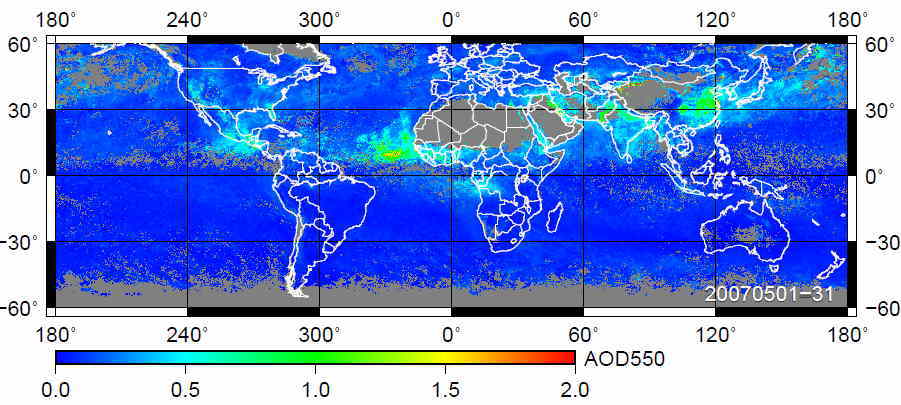
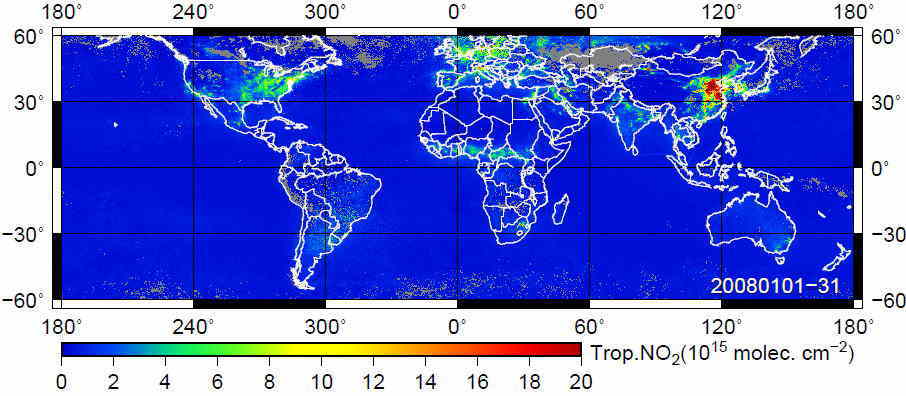
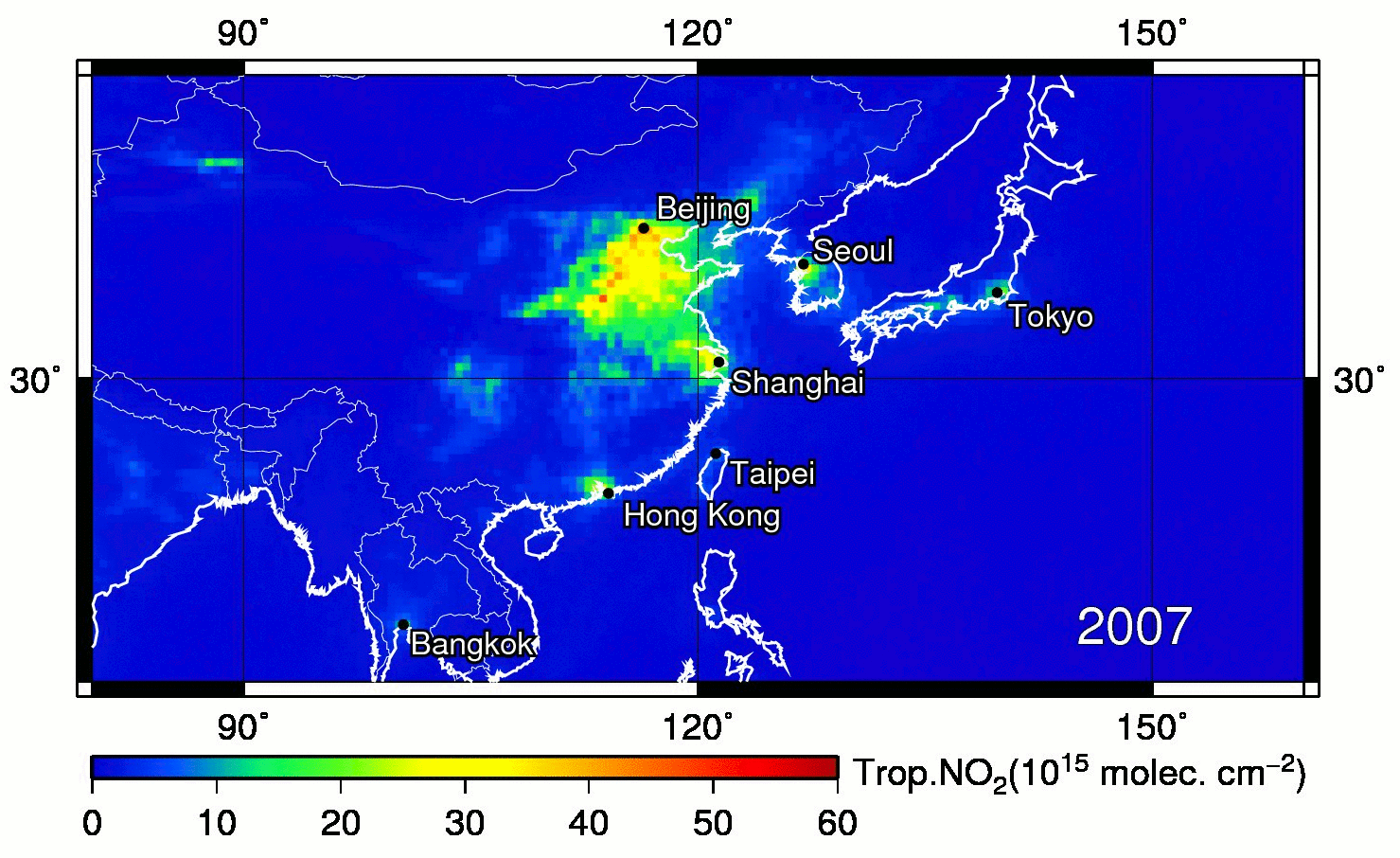
Research
Synergistic utilization of satellite and ground-based observations
We are analyzing data for various trace gases and aerosols to study variations of air pollution and their causes from the global point of view. In particular, satellite and ground-based observations are synergistically utilized to better understand when, where, and how much atmospheric environment (concentrations of trace gases and aerosol load) is changing.
We are analyzing data for various trace gases and aerosols to study variations of air pollution and their causes from the global point of view. In particular, satellite and ground-based observations are synergistically utilized to better understand when, where, and how much atmospheric environment (concentrations of trace gases and aerosol load) is changing.

Image for synergy of satellite and ground-based observations

Aerosol optical depth data from MODIS sensors aboard NASA Terra and Aqua
satellites (May 2007)

Tropospheric NO2 column data from the OMI sensor aboard the NASA Aura satellite (Jan. 2008)。

Tropospheric NO2 column data from GOME-2 (animation; 2007-2012)
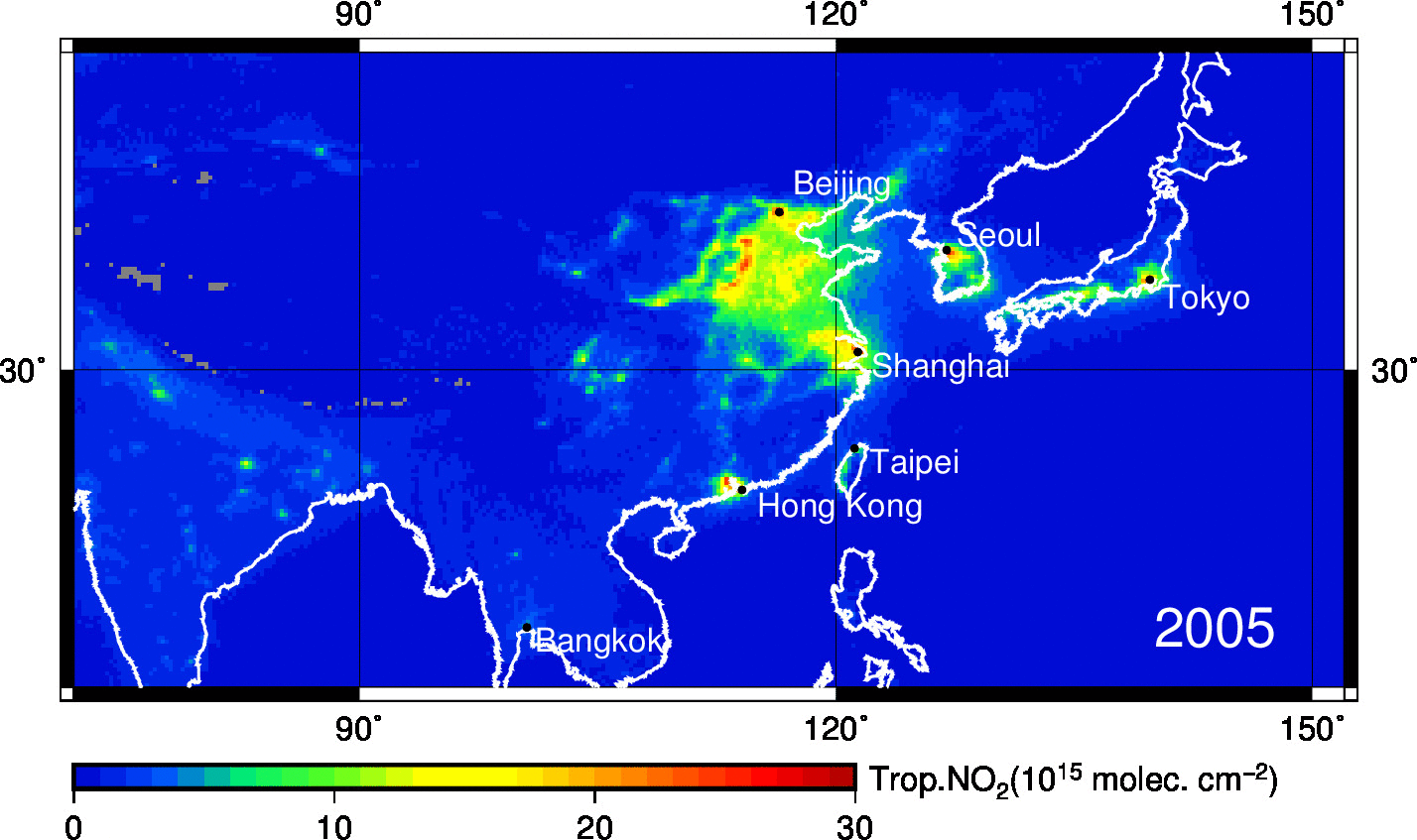
Tropospheric NO2 column data from OMI (animation; 2005-2016)
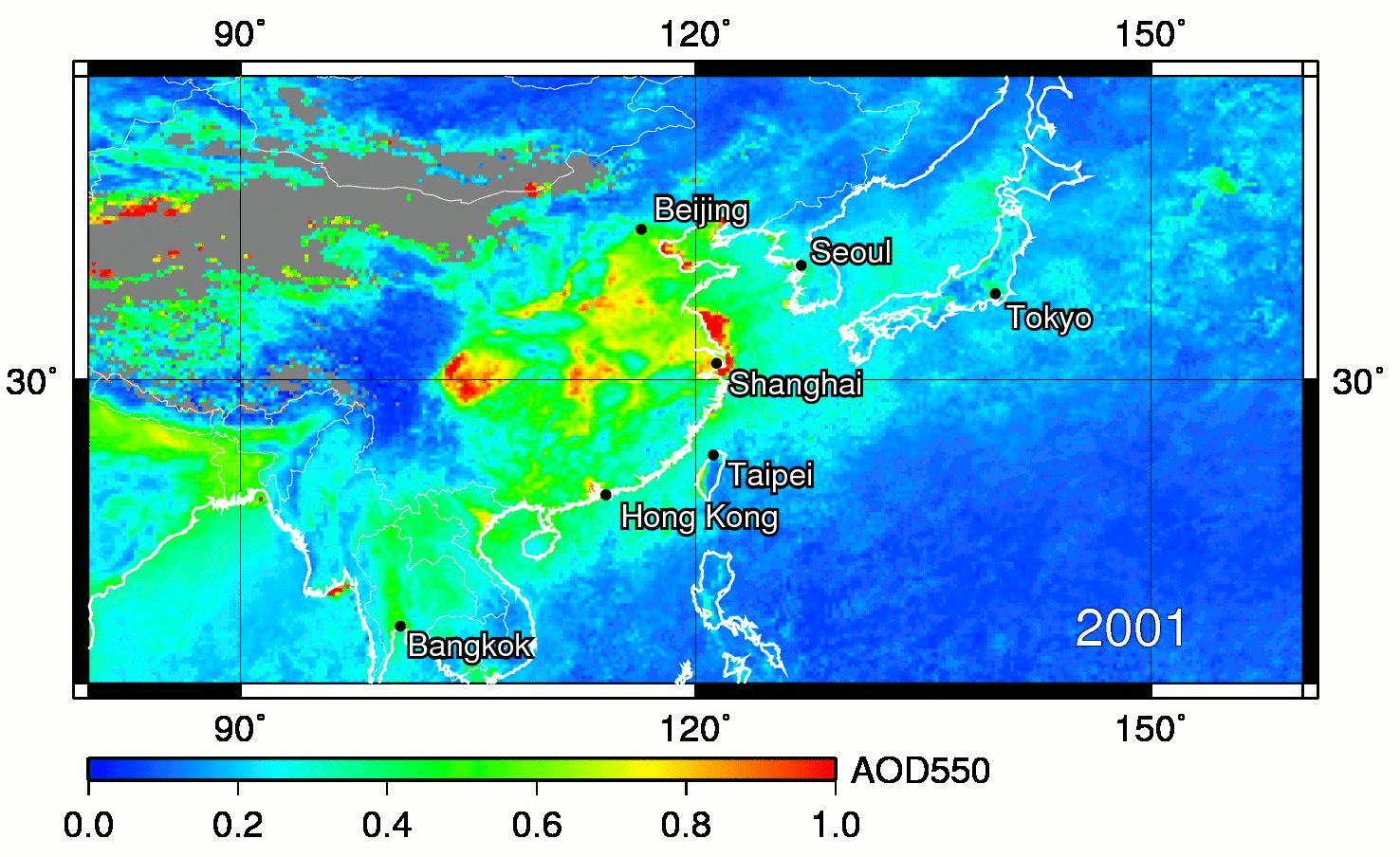
Aerosol optical depnth data from MODIS (animation; 2001-2012)

Tropospheric NO2 column data from OMI (animation; 2005-2016)

Aerosol optical depnth data from MODIS (animation; 2001-2012)
Multi-component observations by state-of-art remote sensing techniques
Simultaneous observation of various components is critical to advance global environmental research. Usually, various types of instruments should be operated simultaneously to realize such a multi-component observation. We are developing the unique, state-of-art ground-based remote sensing technique (MAX-DOAS) for observations of vertical profiles of multi components such as various trace gases (both inorganics and organics) and aerosols. Observations and data analysis are conducted with view to extend research toward understanding interactions of atmosphere with other spheres.

MAX-DOAS observation geometry and its uniqueness

Vertical profiles for multi components retrieved from our MAX-DOAS technique (an example from observations during CINDI campaign in the Netherlands)
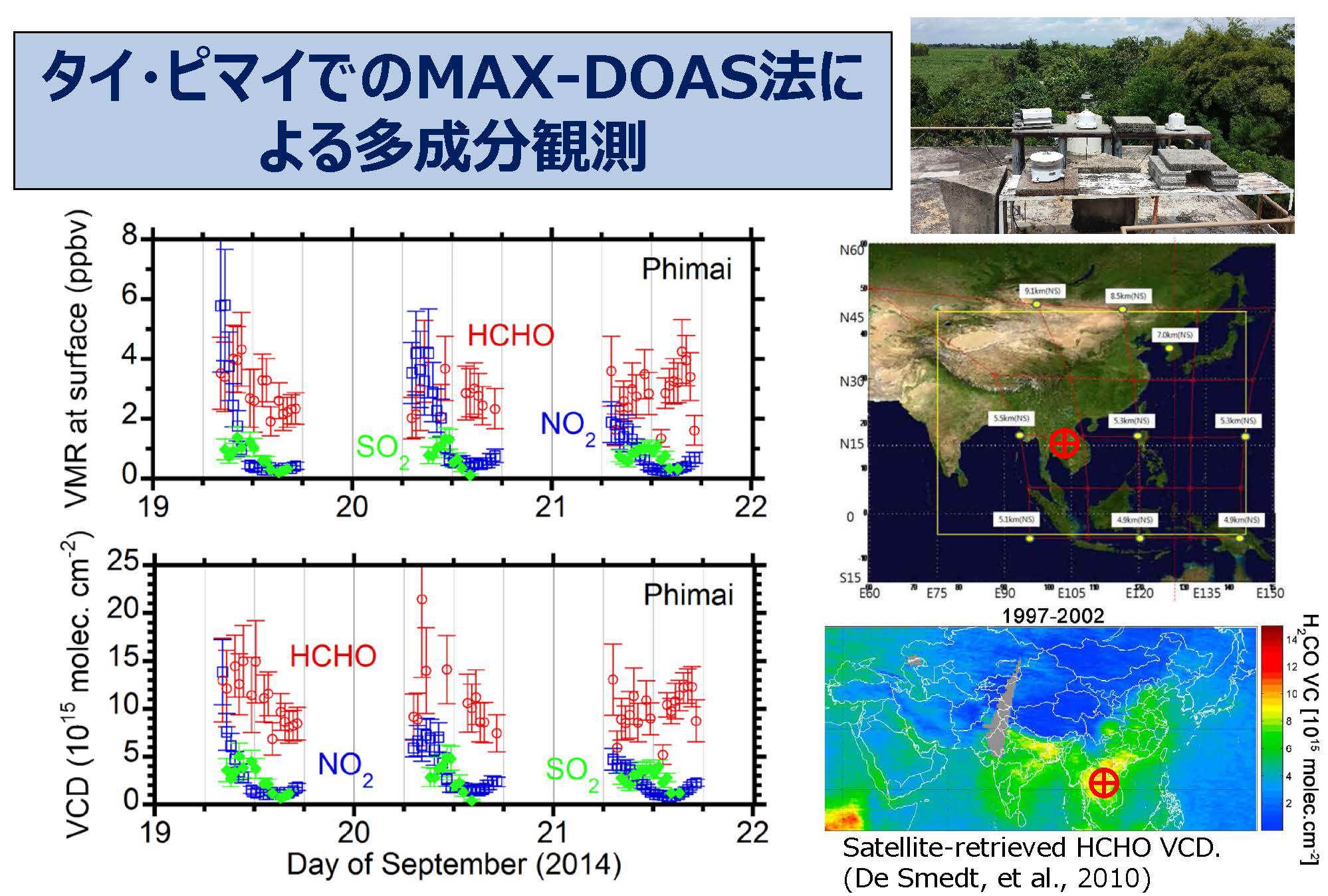
Multi-component observations started in central Thailand in September 2014.
Simultaneous observation of various components is critical to advance global environmental research. Usually, various types of instruments should be operated simultaneously to realize such a multi-component observation. We are developing the unique, state-of-art ground-based remote sensing technique (MAX-DOAS) for observations of vertical profiles of multi components such as various trace gases (both inorganics and organics) and aerosols. Observations and data analysis are conducted with view to extend research toward understanding interactions of atmosphere with other spheres.

MAX-DOAS observation geometry and its uniqueness

Vertical profiles for multi components retrieved from our MAX-DOAS technique (an example from observations during CINDI campaign in the Netherlands)

Multi-component observations started in central Thailand in September 2014.
Development of the new international ground-based observation network SKYNET
We have been leading SKYNET, an international ground-based observation network dedicated for aerosol-cloud-radiation interaction researches, as part of atmospheric physics. Utilizing this framework, we are developing a new ground-based international observation network that covers not only atmospheric physics but also atmospheric chemistry, by newly adding MAX-DOAS air quality observation systems. The new SKYNET meets the needs for ground-based observations as validation data sources to various new-generation satellite missions and is thus expected to be critical bases for relevant Earth environmental sciences.


Pictures of the SKYNET main instrument called sky radiometer.
We have been leading SKYNET, an international ground-based observation network dedicated for aerosol-cloud-radiation interaction researches, as part of atmospheric physics. Utilizing this framework, we are developing a new ground-based international observation network that covers not only atmospheric physics but also atmospheric chemistry, by newly adding MAX-DOAS air quality observation systems. The new SKYNET meets the needs for ground-based observations as validation data sources to various new-generation satellite missions and is thus expected to be critical bases for relevant Earth environmental sciences.


Pictures of the SKYNET main instrument called sky radiometer.